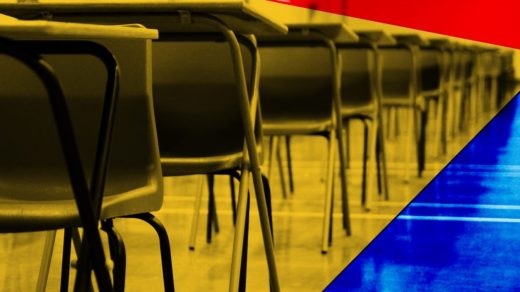The urgent call for educational innovation
By Sunil Gunderia
Human capital, defined by the collective knowledge, skills, and attributes of individuals, is the cornerstone of productivity and growth in any economy or organization. Its foundation is laid in early childhood and is further nurtured through formal education, training, and real-world experiences. In our age of profound “accelerations,” as termed by three-time Pulitzer Prize-winning journalist Thomas Friedman, the rapid transformations we witness underscore the need for accelerated learning and adaptability. This new era requires a critical assessment of our educational systems to determine our readiness to meet the challenge.
To understand the state of education today, it is important to examine recent test scores.
These declines in fundamental abilities can profoundly impact the future labor market, leading to a workforce that may lack essential skills and consequently face diminished earning power. In the article, “Generation Lost: The Pandemic’s Lifetime Tax,” published in Education Next, Stanford University economist Eric Hanushek describes these declines as a “lifetime tax” for the COVID cohort of students who he estimates will earn, on average, 6% less over their careers. Equally daunting is the impact this skill gap will have on the U.S. economy, which Hanushek, estimates to be an astounding $28 trillion on a present-value basis.
Learner variability
Unfortunately, our educational system has not evolved to address the diverse learning needs present both across schools and within each classroom, resulting in the need for new solutions. The immensity of the economic challenge to our future workforce and our economy dictates the urgency to innovate our approach to education.
“Breaking With the Past: Embracing Digital Transformation in Education,” a publication from Digital Promise (a nonprofit organization originated by the U.S. Congress as part of the 2008 reauthorization of the Higher Education Opportunity Act), posits that recognizing learner variability is crucial to any teaching and learning framework. Educational technology (edtech) offers the potential to address learner variability by providing teachers the data they need to create personalized, engaging, and adaptive learning experiences—at scale—that cater to each student’s unique needs.
This requires a new data-driven model for education that fully utilizes the capabilities of AI and edtech potential to provide real-time actionable insights into student knowledge and behaviors, thereby facilitating new, customized approaches to learning. This educational model is essential for accelerating learning and equipping students with the adaptability they need for a technology-driven future. Starting this approach with our youngest learners has the potential to create a growth mindset for our students and to stimulate creativity and bolster critical thinking.
Expanded commitment to early education is backed by groundbreaking research from James Heckman, a professor and economist at the University of Chicago. His Nobel Prize-winning study discovered that the most effective and efficient societal investments in education are those made in early childhood. Based on these findings, many states are intensifying their focus and investment in early education programs.
As of 2023, the integration of technology in early education is on the rise. With more digital tools at their disposal, states are funding innovative educational solutions to enrich early learning experiences. These initiatives and increased funding for early education across states are strategic endeavors to secure long-term benefits for individuals and the broader society.
The importance of an evidence-based approach
For edtech solutions to be truly effective, they must be grounded in robust research and empirical evidence. As technology becomes an integral part of classroom learning, these tools must be supported by credible research. The Department of Education underscores the necessity of basing edtech decisions on rigorous evidence to ensure they genuinely enhance student outcomes. Further, a report from the EdTech Evidence Exchange highlights the pressing need for better dissemination of information on effective technology solutions, thereby aiding educators in discerning which solutions are most likely to bolster learning and engagement for their students. By steadfastly advocating for evidence-driven edtech solutions, educators and policymakers can guarantee that technological advancements not only transform education but also yield tangible, positive results for students in our swiftly evolving digital economy.
In an age characterized by profound accelerations, the value of human capital becomes even more pronounced. As we navigate these rapid transformations, the importance of nurturing and expanding our collective knowledge, skills, and attributes is undeniable. The integration of technology in education serves as a testament to our adaptability and our pursuit of accelerated learning.
While we face challenges, the convergence of education and technology offers a beacon of hope. By harnessing the potential of AI and edtech, we are not only adapting to our changing world but also investing in our most valuable asset: human capital. Through collaboration among educators, technologists, and policymakers, we are laying the foundation for a future where every individual, irrespective of their background, has the knowledge and skills to rise to the challenges of rapid change to achieve their fullest potential, benefiting both themselves and society at large.
Sunil Gunderia is chief innovation officer and head of mastery and adaptive products at Age of Learning.
(20)



